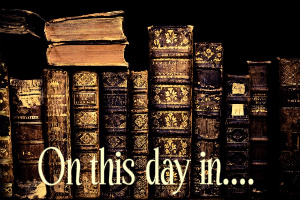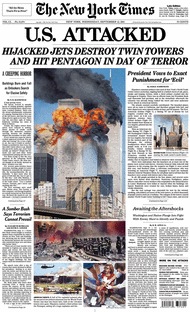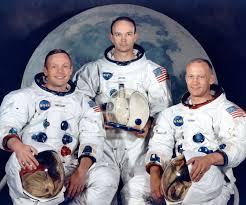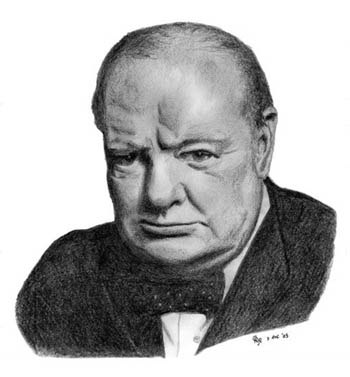
We are going to have a roller-coaster winter. They are talking about another Polar Vortex (there is apparently a difference from the usual Alberta Clipper) coming to town by next weekend. It may not be as severe as the last one, but it will bring the National Capital Region snow and more chaos. I mean, not the usual chaos.
Anyway, I saw the editorial in the NY Times applauding the joint letter issued Last week by the Department of Education’s Office for Civil Rights and the Justice Department’s Civil Rights Division (where there have been other interesting developments we have talked about before). The letter contains what the Times called “an extensive set of guidance documents, informing school districts of the law and showing them how to identify, avoid and remedy discriminatory disciplinary policies.”
Apparently the whole zero-tolerance thing is what is out of whack. School administrators have no options in dealing with violations of policy- sort of like the mandatory sentencing for drug violations.
You know the litany of lunacy- children being punished for biting Pop-Tarts into the shape of pistols, or cocking a finger at one another in an ominous manner. A 100% prohibition of guns in schools is being applied to the idea of guns, which is a separate thing altogether.
The Times takes things a step further. The Editorial board supports the DoJ view that it is wrong that some ethnic groups are being disciplined in different percentages than others under the zero-tolerance regime.
I don’t claim to understand it, nor, I think, does the Justice Department. There is some sort of magical thinking going on in public policy that takes statistics for justice, and then inverts it into justice by statistics. The recommendation is that all ethnic groups should be disciplined in precisely the same proportions.
I think there may be a case here that demonstrates with equal validity that some other significant public policy issues have failed, clearly and miserably, but that isn’t where I was intending to go this morning.
I have an ambivalent relationship with The Times. Once, that Gray Lady was the paper of record for the United States. My Dad gave me a subscription to the Sunday issue when I was shipped off to Korea, and I savored the sections right through the week. By then I knew the news, but the features were fabulous.
I still subscribe, though I look at the Swiss cheese that used to be a firewall between opinion and reporting with a jaundiced eye. I used to love the “On This Day” footnote that featured stories from the paper’s long history to match the date.
For example, today’s commemoration is of the House of Representatives vote to reject a proposal to give women the right to vote in 1915. Seems ridiculous, doesn’t it?
I didn’t find anything there with which to go wild. The 19th Amendment passed a majority of states and was ratified into the Constitution only five years later. But I did poke around enough to find that the Times is mucking around with the past.
There is normally a link to the actual front page that contains the contemporaneous original story. I followed it this morning to follow up, and discovered a frank discussion about what the present thinks about the past. There being 365 days in most years, and 366 on leap year, that was the total number of “On this Day” vignettes, going back to the 1867 Dredd Scott decision in the Supreme Court that arguably helped pave the road to the Civil War.*
Anyway, the master list of stories had been updated only twice since the feature was established in 1997. Last summer, the Paper decided to “reboot” the section. Times editors conducted a thorough review, busily adding and subtracting events with the “goal of keeping the balance and richness of the old list while including the biggest headlines from the last 14-plus years.”
They made 26 changes in a process that reminded me a bit of the same process used by NASA’s Dr. James Hansen when he controlled the GISS temperature data base- you know, the adjustments that cooled the past to make the present seem warmer.

The Times made some interesting discoveries in reviewing the list. I will summarize briefly.
What is out:

Space exploration (20 entries)
Winston Churchill (7)
President Andrew Johnson’s impeachment (3)
Amelia Earhart (3)
Princess Diana
What is in:

Hurricane Katrina
The Death of Osama bin Laden
Fall of the Berlin Wall (how did they miss that one the first time?)
Rwandan Genocide
The Indian Ocean Tsunami of 2004
Introduction of the iPhone
The Surgeon General’s report on smoking
The Supreme Court decision to stop the Florida Re-count
Thankfully, this is not like the revised GISS data base, in which changes are buried anonymously and without attribution. That is indeed Orwellian. The changes made by the Times do have links to the original list and if they are not one-to-one correlations, you can at least find what competed to be mentioned as history.
1984’s Winston Smith had a job that involved changing the past at the Ministry, much more like Dr. Hansen. Winston summed it up pretty well himself, speaking to his paramour Julia: “Do you realize that the past, starting from yesterday, has been actually abolished? If it survives anywhere, it’s in a few solid objects with no words attached to them, like that lump of glass there. Already we know almost literally nothing about the Revolution and the years before the Revolution. Every record has been destroyed or falsified, every book has been rewritten, every picture has been repainted, every statue and street and building has been renamed, and every date has been altered. And that process is continuing day-by-day and minute-by-minute. History has stopped.”
Well, he has a point there. Those that control the present do control the past in large measure, and can chart the way to the future that is, as yet, unwritten. But on the whole, I think Winston Churchill might have something to say to our present that the Times would just as soon have us forget.

Copyright 2014 Vic Socotra
www.vicsocotra.com
Twitter: @jayare303
* I recommend the historic courthouse in downtown St. Louis for its commemoration of the context and court events in that magnificent building that helped propel Mr. Scott’s case to the national level, BTW.
